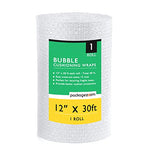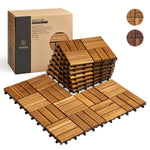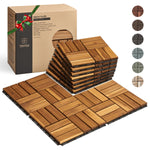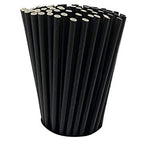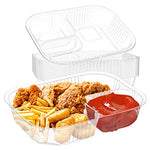You have no items in your shopping cart.
When it comes to plumbing, we often overlook the importance of the toilet waste pipe. This humble component plays a crucial role in maintaining the hygiene and functionality of our toilets. In this article, we will delve deep into the world of toilet waste pipes, exploring their functions, installation, common issues, and maintenance. So, grab a seat and let's flush out all the details!
What is a Toilet Waste Pipe?
A toilet waste pipe, also known as a soil pipe or drain pipe, is a vital part of a toilet's plumbing system. It is responsible for carrying wastewater, human waste, and toilet paper from the toilet bowl to the sewer or septic tank. Without a properly functioning waste pipe, our toilets would become unusable and unhygienic in no time.
Functions of a Toilet Waste Pipe
The toilet waste pipe performs several important functions to ensure the proper disposal of waste. Let's take a closer look at some of its key roles:
1. Carrying Waste Away
The primary function of a toilet waste pipe is to transport waste materials away from the toilet and into the sewer or septic system. It provides a direct route for waste to exit the toilet bowl, preventing any blockages or backups within the toilet itself.
2. Maintaining Hygiene
By swiftly removing waste from the toilet, the waste pipe helps maintain proper hygiene and prevents the spread of diseases and foul odors. It ensures that waste is safely transported to the appropriate disposal system, keeping our bathrooms clean and fresh.
3. Venting Gases
Toilet waste pipes also serve as a venting system for gases produced during the waste disposal process. These pipes are typically connected to a vent stack that extends through the roof of a building. The vent stack allows the release of odorous gases, such as methane, from the waste system, preventing unpleasant smells from lingering in the bathroom.
Installation of a Toilet Waste Pipe
Proper installation of a toilet waste pipe is crucial for the efficient functioning of a toilet. Here's a step-by-step guide on how to install a waste pipe:
1. Gather the Required Tools and Materials
Before starting the installation, make sure you have all the necessary tools and materials. These may include a pipe cutter, PVC primer, PVC cement, measuring tape, and a hacksaw.
2. Measure and Cut the Pipe
Measure the required length for the waste pipe, keeping in mind the distance from the toilet to the sewer or septic system. Use a pipe cutter or hacksaw to cut the pipe to the desired length.
3. Prepare the Pipe Ends
Using sandpaper or a deburring tool, smooth out the cut ends of the pipe to ensure a proper fit. Remove any burrs or rough edges that could hinder the connection.
4. Apply Primer and Cement
Apply a layer of PVC primer to the outside of one pipe end and the inside of the corresponding fitting. After a few seconds, apply PVC cement to both primed areas. Quickly insert the pipe into the fitting, twisting slightly to ensure a secure bond. Hold the joint firmly for a few seconds to allow the cement to set.
5. Test the Connection
Once the pipe and fittings are securely joined, test the connection by pouring water into the toilet bowl and flushing. Check for any leaks or abnormalities. If everything appears to be functioning correctly, you've successfully installed a toilet waste pipe!
Common Issues with Toilet Waste Pipes
Like any other plumbing component, toilet waste pipes can encounter problems over time. Here are some common issues you may face with your toilet waste pipe:
1. Clogs and Blockages
One of the most prevalent issues with toilet waste pipes is the occurrence of clogs and blockages. These can be caused by the buildup of toilet paper, foreign objects, or a lack of proper waste disposal practices. Regular maintenance and avoiding the flushing of non-biodegradable items can help prevent clogs.
2. Leaks
Leaking toilet waste pipes can lead to water damage, unpleasant odors, and the potential for mold growth. Leaks can occur due to loose connections, cracks in the pipe, or worn-out seals. If you notice any signs of leakage, such as damp spots or a persistent smell, it's essential to address the issue promptly.
3. Corrosion
Over time, toilet waste pipes made from certain materials, such as cast iron, can corrode. Corrosion weakens the structural integrity of the pipe, making it prone to leaks and blockages. Regular inspections and timely replacement of corroded pipes can help avoid major plumbing issues.
Maintaining a Toilet Waste Pipe
Proper maintenance of your toilet waste pipe is vital to ensure its longevity and optimal performance. Here are some maintenance tips to keep your waste pipe in good condition:
1. Regular Cleaning
To prevent the buildup of waste and potential clogs, it's important to clean your toilet waste pipe regularly. You can use commercially available drain cleaners or natural alternatives like baking soda and vinegar. Follow the manufacturer's instructions when using drain cleaning products and avoid mixing different chemicals.
2. Avoid Flushing Non-Biodegradable Items
Toilet waste pipes are designed to handle human waste and toilet paper. Flushing non-biodegradable items, such as wet wipes, sanitary products, or cotton balls, can lead to clogs and blockages. Dispose of these items in the trash instead of flushing them down the toilet.
3. Inspect for Leaks
Periodically inspect your toilet waste pipe for any signs of leakage. Look for damp spots, discoloration, or foul odors around the pipe and its connections. If you detect a leak, promptly repair or replace the affected section to prevent further damage.
4. Consider Professional Inspections
For older plumbing systems or if you suspect underlying issues with your toilet waste pipe, it's wise to consult a professional plumber. They can conduct thorough inspections, identify potential problems, and recommend appropriate solutions.
FAQs (Frequently Asked Questions)
Q1: How do I know if my toilet waste pipe is clogged?
A1: Signs of a clogged toilet waste pipe include slow drainage, gurgling sounds, and water backing up in the toilet bowl. If you experience any of these issues, it's likely that your waste pipe is clogged.
Q2: Can I use chemical drain cleaners to unclog my toilet waste pipe?
A2: Chemical drain cleaners can be effective for minor clogs, but they may also damage your pipes if used excessively or incorrectly. It's best to try natural methods first or seek professional help for stubborn clogs.
Q3: How often should I clean my toilet waste pipe?
A3: Cleaning your toilet waste pipe every few months is generally sufficient. However, if you notice recurring clogs or slow drainage, you may need to clean it more frequently.
Q4: Can a leaking toilet waste pipe cause water damage?
A4: Yes, a leaking toilet waste pipe can lead to water damage, especially if left unaddressed for an extended period. It's crucial to fix leaks promptly to prevent further issues.
Q5: Can I replace a toilet waste pipe myself?
A5: While minor repairs or replacements can be done by confident DIYers, it's often recommended to hire a professional plumber for such tasks. They have the necessary expertise and tools to ensure a proper installation.
Q6: Are there any alternatives to PVC for toilet waste pipes?
A6: Yes, there are alternative materials available for toilet waste pipes, such as ABS (acrylonitrile butadiene styrene) or cast iron. Each material has its own advantages and considerations, so it's best to consult a plumber for guidance on the most suitable option for your plumbing system.
Conclusion
Although often overlooked, the toilet waste pipe plays a crucial role in maintaining the cleanliness and functionality of our toilets. Understanding its functions, proper installation, common issues, and maintenance requirements can help us ensure a trouble-free and hygienic bathroom experience. By giving due attention to this unsung hero of plumbing, we can keep our toilets flushing smoothly for years to come!



